Ankle Sprain and Physiotherapy Treatment
What is an Ankle Sprain?
An ankle sprain is a common injury that occurs when the ligaments surrounding the ankle joint are stretched or torn. Ligaments are strong bands of tissue that connect bones and provide stability to the joint. Ankle sprains often happen during activities that involve sudden changes in direction, twisting, or landing awkwardly, such as sports or walking on uneven surfaces.
The severity of an ankle sprain can range from mild to severe, depending on the extent of ligament damage. Common symptoms include pain, swelling, bruising, difficulty bearing weight on the affected ankle, and limited range of motion.
- An ankle sprain occurs when the strong ligaments that support the ankle stretch beyond their limits and tear.
- Ankle sprains are common injuries that occur among people of all ages. They range from mild to severe, depending upon how much damage there is to the ligaments.
- Lateral ankle sprains are referred to as inversion ankle sprains or as supination ankle sprains.
- It is usually a result of a forced plantarflexion/inversion movement, the complex of ligaments on the lateral side of the ankle is torn by varying degrees.
Anatomy related to an Ankle sprain
- The bones that make up the ankle joint include the distal tibia and fibula (the medial and lateral malleolus, respectively) and the talus bones that make up the ankle joint include the distal tibia and fibula (the medial and lateral malleolus, respectively) and the talus.
Joints:
- The Ankle Complex consists of 3 articulations The talocrural (ankle joint) ( Mortise joint) is a hinge joint between the inferior surface of the tibia and the superior surface of the talus.
- It allows the movements of plantarflexion and dorsiflexion(sagittal plane).
- The talocrural joint receives ligamentous support from a joint capsule and several ligaments, including the anterior talofibular ligament (ATFL), posterior talofibular ligament (PTFL), calcaneofibular ligament (CFL), and deltoid ligament.
- The ATFL, PTFL, and CFL support the lateral aspect of the ankle. Plantarflexion is the least stable position of the ankle joint, which explains why the majority of ankle injuries occur in this position.
- The inferior tibiofibular joint is the articulation between the distal parts of the tibia and fibula, where a small amount of rotation (transverse plane) is possible.
- Injury in these joints is called (high ankle sprains). Ligaments are strong, fibrous tissues that connect bones to other bones. The ligaments in the ankle help to keep the bones in proper position and stabilize the joint.
- Most sprained ankles occur in the lateral ligaments on the outside of the ankle. Sprains can range from tiny tears in the fibers that make up the ligament to complete tears through the tissue.
- If there is a complete tear of the ligaments, the ankle may become unstable after the initial injury phase passes.
- Over time, this instability can result in damage to the bones and cartilage of the ankle joint. The joint is stabilized by a thick interosseous membrane and the anterior and posterior inferior tibiofibular ligaments.
- The subtalar joint is an articulation between the talus and calcaneus and allows the movements of eversion and inversion (frontal plane).
- It also has an important role as a shock absorber. The ligamentous support of the subtalar joint is extensive, it is divided into 3 groups:
- (1) deep ligaments, (2) peripheral ligaments, and (3) retinaculum.
- The lateral ligaments of the ankle, are composed of the anterior talofibular ligament (ATFL), the calcaneofibular ligament (CFL), and the posterior talofibular ligament.
- The medial (deltoid) ligaments are much stronger than the lateral ligament and are therefore injured much less frequently.
Causes of Ankle sprain
- the foot can twist unexpectedly during many different activities, such as:
- Walking or exercising on an uneven surface
- Falling down
- Participating in sports that require cutting actions or rolling and twisting of the foot—such as trail running, basketball, tennis, football, and soccer
- During sports activities, someone else may step on your foot while you are running, causing your foot to twist or roll to the side.
Symptoms of Ankle sprain
A sprained ankle is painful. Other symptoms may include:
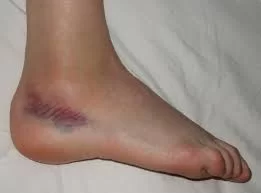
- Swelling
- Bruising
- Tenderness to touch
- Instability of the ankle—this may occur when there has been complete tearing of the ligament or complete dislocation of the ankle joint.
- If there is severe tearing of the ligaments, you might also hear or feel a “pop” when the sprain occurs.
- Symptoms of a severe sprain are similar to those of a broken bone and require prompt medical evaluation.
Grades of Ankle Sprain
- Grades of Ankle Sprains
- After the examination, your doctor will determine the grade of your sprain to help develop a treatment plan. Sprains are graded based on how much damage has occurred to the ligaments.
- Grade 1 Sprain (Mild) :
- Slight stretching and microscopic tearing of the ligament fibers
- Mild tenderness and swelling around the ankle
- Grade 2 Sprain (Moderate) :
- Partial tearing of the ligament
- Moderate tenderness and swelling around the ankle
- If the doctor moves the ankle in certain ways, there is an abnormal looseness of the ankle joint
- Grade 3 Sprain (Severe) :
- A complete tear of the ligament
- Significant tenderness and swelling around the ankle
- If the doctor pulls or pushes on the ankle joint in certain movements, substantial instability occurs.
Diagnosis of Ankle sprain:
- diagnosis is based on
- HISTORY: Taking an accurate history is an important step in determining the nature of the injury.
- A plantarflexion/inversion injury would indicate damage to the lateral ligament, whereas a dorsiflexion/eversion injury would indicate damage to the medial ligament.
- The previous history of injury on the same side will give clues as to whether the ankle was unstable too, begin with, or that a previous injury wasn’t properly rehabilitated.
- A history of injury on the other side as well may indicate a biomechanical predisposition towards ankle injuries.
OBSERVATION: The physical examination begins with the general observation of the foot and ankle. Any signs of injury, inflammation, color changes of the skin, or atrophy/hypertrophy of the muscles are noted.
- After that, observation of the foot and ankle continues in two different positions non-weight bearing (n-WB) and weight-bearing (WB) positions.
- Make a note of the gait pattern, degree of limp (if any), the facial expression on weight-bearing, and any other signs that may provide more information about the injury.
PALPATION :
- An important aspect of the initial examination is to determine the exact site of the lateral ligament sprain, whether it’s the ATFL, CFL, or PTFL (usually damaged in that order).
- Palpating the lateral aspect of the ankle over the course of the various aspects of the ligament complex will provide detailed information on the exact location of the tear.
- Begin palpating gently as this can potentially be acutely painful for the patient.
EXAMINATION :
- Range of motion (ROM)
- ROM of the ankle needs to be assessed actively and passively. The movements to be assessed are:
- Plantarflexion and dorsiflexion;
- Inversion and eversion.
SPECIAL TEST :
- Anterior draw
- Talar tilt
- Proprioception
- An anterior draw is done to test the integrity of the ATFL and CFL. With the ankle in plantar flexion, the heel is grasped with the tibia stabilized and drawn anteriorly.
- Talar tilt is done to assess the integrity of the ATFL and CFL laterally and the deltoid ligament medially. Again the heel is grasped, the tibia stabilized and the talus and calcaneus are moved laterally and medially.
- Proprioception can be assessed in any number of increasingly difficult ways, beginning with a simple single-leg stance. The patient can do it on the normal side first, to allow the therapist to get an idea of what the normal is, and then attempt on the injured side.
- This test can be progressed by asking the patient to reach outside their base of support (BOS), rotating their neck, or closing their eyes. Moving onto a wobble board or any other unstable surface will allow the therapist to assess the patient’s ability to respond to a changing surface.
Treatment of Ankle Sprain:
Medical Treatment
here are some common approaches that may be recommended for treating an ankle sprain:
- Rest: Avoid putting weight on the injured ankle to allow it time to heal. You may need to use crutches or a brace to support the ankle and prevent further injury.
- Ice: Using ice on the affected Ankle joint can help reduce swelling and pain. Use an ice pack or a bag of frozen vegetables wrapped in a towel and apply it to the ankle for about 15-20 minutes at a time, several times a day.
- Compression: Wrapping the ankle with an elastic bandage or compression wrap can help reduce swelling and provide support. Make sure not to wrap it too tightly, as it could restrict blood flow.
- Elevation: Elevating the leg by using the pillow during rest above the heart level can help reduce swelling. Prop your ankle up on pillows or use a reclining chair to keep it elevated whenever possible.
- Pain relief: Over-the-counter pain medications, such as acetaminophen or nonsteroidal anti-inflammatory drugs (NSAIDs) like ibuprofen, may help relieve pain and reduce inflammation. Follow the instructions and consult a healthcare professional if you have any concerns.
- Physical therapy: Depending on the severity of the sprain, a healthcare professional may recommend physical therapy to restore strength, flexibility, and stability to the ankle. Physical therapy exercises may include range-of-motion exercises, stretching, strengthening, and balance exercises.
- Immobilization: In more severe cases, the healthcare professional may suggest immobilizing the ankle with a splint or a cast to promote healing and protect the injured ligaments.
Remember, every injury is unique, and the recommended treatment may vary depending on the severity of the sprain.
Physiotherapy Treatment
- REDUCE PAIN AND SWELLING: Initial management (i.e. within the first 48-72 hours) of an acute lateral ligament injury is to reduce pain and swelling by following the RICE regimen; Rest, Ice, Compression, and Elevation.
- If weight-bearing (WB) is too painful, the patient can be given elbow crutches and be non-weight-bearing (NWB) for 24 hours.
- However, it’s important that at least partial weight bearing (PWB) is initiated relatively soon, together with a normal heel-toe gait pattern, as this will help to reduce pain and swelling.
- Gentle soft tissue massage can be performed to assist with the removal of edema and gentle stretches, as long as this is pain-free.

- RANGE OF MOTION EXERCISE :
- active assisted movements of the ankle joint include
- dorsiflexion
- plantarflexion
- eversion is especially
- inversion
- RESTORE PROPRIOCEPTION :
- Proprioception training should begin as soon as pain allows during the rehabilitation program.
WEIGHT-BEARING :
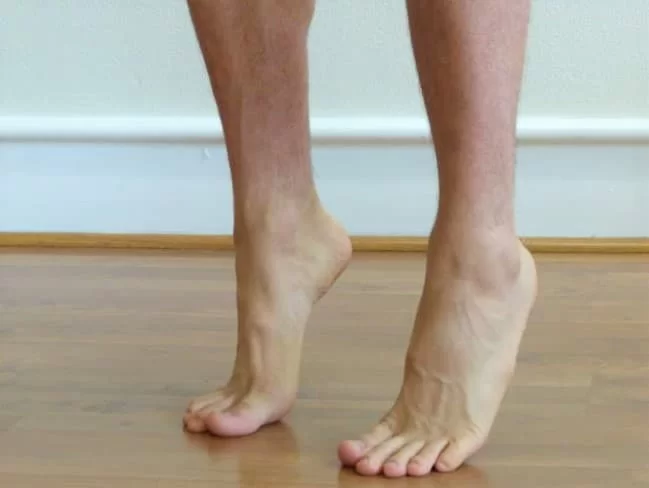
- weight-bearing should be initiated as pain allowed
- one leg standing
- toe standing
- heel standing
- toe walking
- heel walking
- lunges
- marching
Surgical Treatment
In most cases, surgical treatment is not necessary for ankle sprains. However, there are situations where surgery may be considered, particularly for severe ankle sprains that involve significant ligament damage or when conservative treatment methods have not been successful. Here are some scenarios where surgical intervention may be recommended:
- Severe ligament tear: If the ligaments in the ankle are completely torn or significantly damaged, surgery may be needed to repair or reconstruct the ligaments.
- Chronic instability: If the ankle remains unstable or prone to recurrent sprains despite conservative treatment and rehabilitation, surgical repair or stabilization procedures may be considered to restore stability.
- Associated fractures: If the sprain is accompanied by a fracture, especially a displaced fracture, surgery may be necessary to realign and stabilize the bones.
- Athletes and active individuals: People who participate in high-demand physical activities, such as athletes, may opt for surgery to ensure a faster and more robust recovery, allowing them to return to their sport with reduced risk of re-injury.
It’s important to note that the decision to undergo surgery is typically made after a thorough evaluation by a healthcare professional, who will consider factors such as the severity of the injury, the individual’s overall health, lifestyle, and activity level. They will discuss the risks, benefits, and potential outcomes of surgery to help the patient make an informed decision.
If you have sustained an ankle sprain, it’s essential to consult with a healthcare professional who can assess your specific condition and provide appropriate advice and treatment options tailored to your needs.
Ankle Sprain Recovery Time
The Ankle sprain Recovery Time can vary depending on the condition, the severity of the injury, associated other conditions, age, and individual factors. In general, mild to moderate ankle sprains may take anywhere from a few weeks to a couple of months to heal completely. Severe ankle sprains, especially those involving significant ligament damage or associated fractures, may require a longer recovery period.
During the initial stage of recovery, the focus is on managing pain, reducing swelling, and allowing the ligaments to heal. Resting the affected ankle, using ice packs, applying compression, and elevating the foot can help alleviate symptoms and promote healing. Over-the-counter pain medications can also be used to manage pain and inflammation.
As healing progresses, rehabilitation exercises and physical therapy play a crucial role in restoring strength, flexibility, and stability to the ankle. These exercises may include range-of-motion exercises, stretching, strengthening, and balance exercises. The duration and intensity of the rehabilitation program will depend on the specific injury and the individual’s progress.
It’s important to note that everyone heals at a different pace, and the recovery time can be influenced by various factors such as age, overall health, compliance with treatment, and adherence to rehabilitation exercises. It’s essential to follow the guidance of a healthcare professional and gradually return to activities to prevent reinjury.
If you have sustained an ankle sprain, it’s recommended to consult with a healthcare professional who can provide a more accurate prognosis and specific guidance based on your individual circumstances.
Grade-wise Ankle Sprain Recovery Time
Ankle sprains are commonly graded based on the severity of the injury. The recovery time for each grade of ankle sprain can vary. Here’s a general guideline for the recovery time associated with different grades of ankle sprains:
- Grade 1 Ankle Sprain: Grade 1 sprains are considered mild, involving stretching or slight tearing of the ligaments. Recovery time for a grade 1 ankle sprain is typically around 1-3 weeks. With proper rest, ice, compression, and elevation (RICE) therapy, along with rehabilitation exercises, most people can expect a full recovery within this timeframe.
- Grade 2 Ankle Sprain: Grade 2 sprains are moderate in severity and involve partial tearing of the ligaments. Recovery time for a grade 2 ankle sprain can range from 4-6 weeks. These sprains may require a period of immobilization with a brace or walking boot, followed by a gradual return to weight-bearing and rehabilitation exercises to regain strength and stability.
- Grade 3 Ankle Sprain: Grade 3 sprains are the most severe, involving a complete tear or rupture of the ligaments. Recovery time for a grade 3 ankle sprain can take several months. Treatment for these sprains may involve immobilization with a cast or boot, and in some cases, surgical intervention may be necessary. After the immobilization period, a comprehensive rehabilitation program is usually recommended to restore ankle function and prevent future complications.
It’s important to note that these are general estimates, and individual recovery times can vary. Factors such as age, overall health, compliance with treatment, and the presence of any underlying conditions can influence the healing process. It’s crucial to consult with a healthcare professional for an accurate diagnosis and personalized prognosis based on your specific ankle sprain. They can provide appropriate treatment recommendations and monitor your progress throughout the recovery process.
Summary:
An ankle sprain is a common injury that can be treated without surgery in most cases. The primary goals of treatment are to reduce pain, swelling, and inflammation, promote healing, and restore function. The initial treatment usually involves rest, ice, compression, and elevation (RICE), along with over-the-counter pain medications.
Immobilization with a brace or splint may be necessary to support the ankle and prevent further injury. Physical therapy exercises can help restore strength, flexibility, and stability to the ankle. However, in severe cases where there is significant ligament damage, chronic instability, and associated fractures, or if the individual is an athlete or highly active, surgical intervention may be considered to repair or reconstruct the ligaments or stabilize the ankle.
FAQs
How long does it take a sprained ankle to heal?
Most ankle sprains required protection to heal. The healing process takes about 3 to 6 weeks depending upon severity. The R.I.C.E principle is a very good option: Rest your ankle (avoid walking), I for use ice pack to relieve pain in Ankle, C for compression that you use crepe-bandage around your ankle that helps to stabilize ankle and reduce swelling and E for Elevation means Elevate your Ankle during rest by using 2 to 3 pillow below your Ankle above your heart level and also avoid hanging leg position.
Is it OK to walk on a sprained ankle?
You may be unsure about whether it is safe to walk on your ankle if it has recently been sprained. The majority of medical practitioners might respond “no” to your question. In fact, it’s recommended that the best plan of action for a freshly sprained ankle be immobilising the foot and restricting weight-bearing activities for up to two weeks.
What is the best way to treat a sprained ankle?
Rest: Avoid painful activities such as walking, stair climbing that cause Ankle pain, swelling or discomfort.
Ice: use ice pack to relieve pain in Ankle for 10 to 20 minutes and repeat every 2 to 3 times a day.
Compression: compression that you use crepe-bandage around your ankle that helps to stabilize ankle and reduce swelling
Elevation: Elevate your Ankle during rest by using 2 to 3 pillow below your Ankle above your heart level and also avoid hanging leg position.
How do I know if my ankle sprain is serious?
If you can’t walk after an injury and your swelling and pain haven’t changed or have become worse 24-48 hours after the sprain happened, you should see your doctor for a severe sprain evaluation.
Should I wrap a sprained ankle?
If you have sprained ankle, fluid begins to build up in your ankle. Your ankle may grow rapidly and turn black and blue before you know it. Wrap your ankle in an elastic bandage to reduce swelling and make it feel better.
Will a sprained ankle heal without rest?
Sprained ankles can range in severity, just like other ailments. A moderate sprain is defined as an inflamed or strained ligament, but severe sprains can result in a complete tear. Rest is essential for all sprained ankles, regardless of how long it takes for your ankle to heal.
What does a Grade 1 sprain look like?
In Grade 1 Ankle sprain- moderate discomfort, edoema, and stiffness along with a minor stretching or tearing of the ligament. The ankle feels secure, and walking is typically possible with little discomfort.
Can I wear shoes with a sprained ankle?
Whether you’ve had an ankle sprain before or not, wear supportive shoes. By doing this, you can avoid having your foot twist or your ankle joint drift out of place. Wearing an ankle brace when exercising, participating in sports, or running can be beneficial. This could help your ankle become more stable.

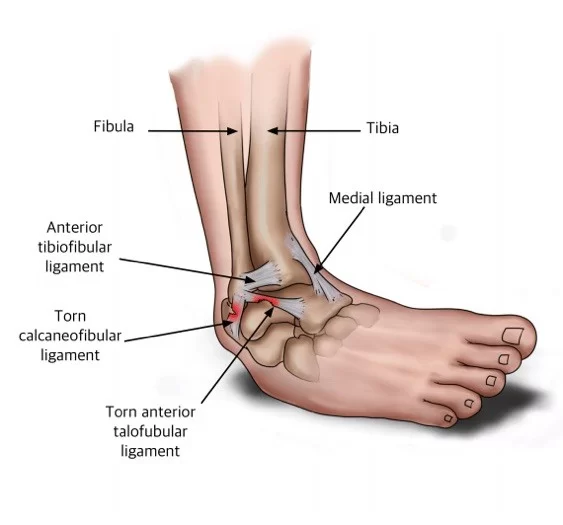

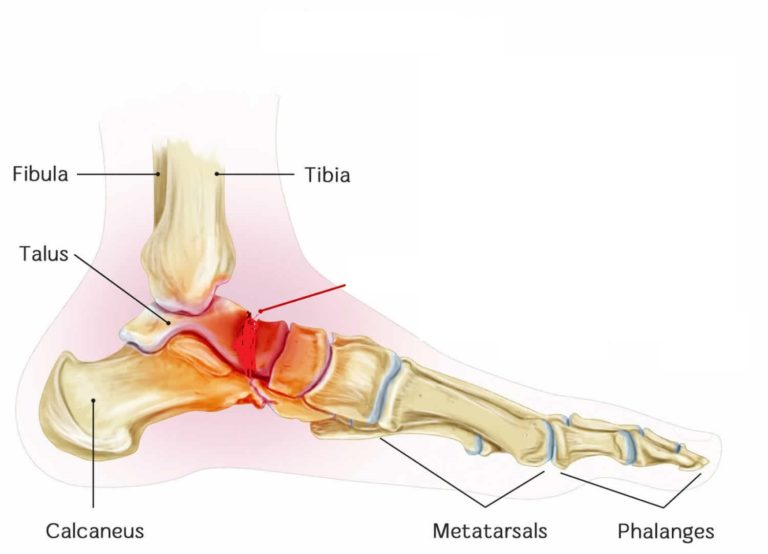

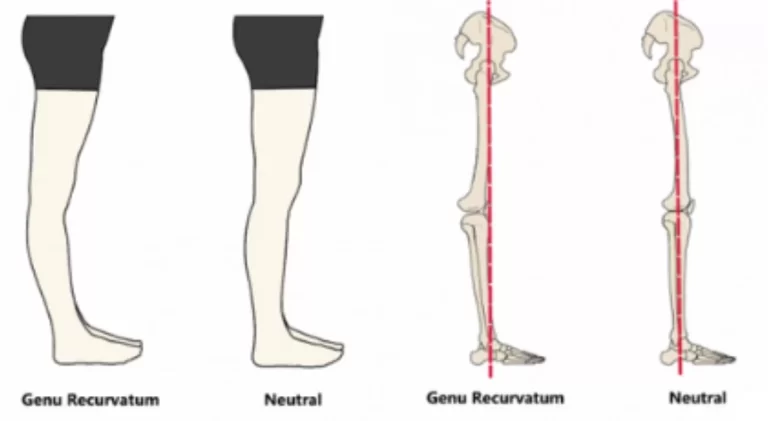
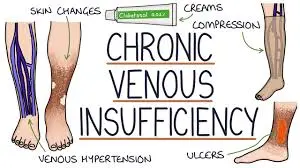

24 Comments